
Sergei Ivanovich Osipov was a Soviet painter, graphic artist, and art teacher, who lived and worked in Leningrad, a member of the Leningrad branch of Union of Artists of Russian Federation. He regarded as one of the representatives of the Leningrad school of painting, most known for his landscape and still life paintings.
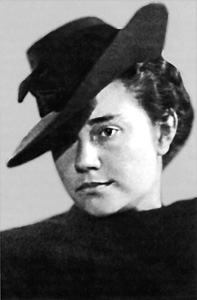
Evgenia Petrovna Antipova was a Russian Soviet painter, watercolorist, graphic artist, and Art teacher, a member of the Saint Petersburg Union of Artists, lived and worked in Leningrad – Saint Petersburg and regarded as one of representatives of the Leningrad School of Painting.

Alexander Nikolayevich Samokhvalov was a Soviet Russian painter, watercolorist, graphic artist, illustrator, art teacher and Honored Arts Worker of the RSFSR, who lived and worked in Leningrad. He was a member of the Leningrad branch of Union of Artists of Russian Federation, and was regarded as one of the founders and brightest representatives of the Leningrad school of painting, most famous for his genre and portrait painting.

Alexander Petrovich Koroviakov was a Soviet, Russian painter and art teacher, lived and worked in Leningrad – Saint Petersburg, a member of the Saint Petersburg Union of Artists, regarded as a representative of the Leningrad school of painting.
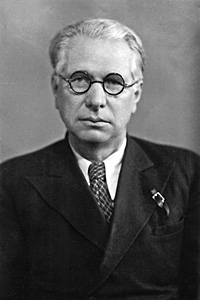
Rudolf Rudolfovich Frentz was a Soviet and Russian painter, watercolorist, graphic artist, illustrator and art teacher who lived and worked in Leningrad. He was a member of the Leningrad Union of Artists and one of the founders of the Leningrad school of painting, most famous for his battle and monumental painting.

Victor Kuzmich Teterin was a Russian painter, watercolorist, and art teacher, who lived and worked in Leningrad is regarded as one of the important representatives of the Leningrad school of painting.

Elena Konstantinovna Gorokhova was a Russian painter, living and working in Saint Petersburg, regarded as one of representatives of the Leningrad School of Painting.
Leonid Anisimovich Tkachenko - Soviet, Russian painter, a member of the Saint Petersburg Union of Artists, living and working in Saint Petersburg, regarded as one of the leading representatives of the "left" wing of the Leningrad school of painting.

Galina Alexeevna Rumiantseva was a Russian Soviet realist painter and graphic artist, who lived and worked in Saint Petersburg. She was regarded as one of representatives of the Leningrad school of painting.
Kapitolina Alexeevna Rumiantseva was a Russian Soviet realist painter and graphic artist, who lived and worked in Saint Petersburg. She was a member of the Saint Petersburg Union of Artists, regarded as one of representatives of the Leningrad school of painting, most famous for her still life paintings.
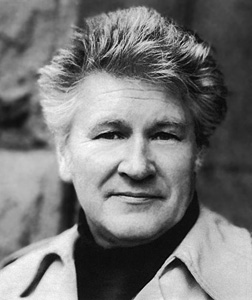
Yuri Dmitrievich Khukhrov was a Russian Soviet realist painter, graphic artist, and art teacher, who lived and worked in Saint Petersburg. He was a member of the Saint Petersburg Union of Artists, and regarded by art historian Sergei V. Ivanov as one of representatives of the Leningrad school of painting.

Cafe Gurzuf is a painting by Alexander Nikolayevich Samokhvalov, Russian artist, regarded as one of the founders and brightest representative of the Socialist Realism style. The painting depicts a view of a summer cafe in Gurzuf, Crimea, in the middle of the 1950s.
German Pavlovich Yegoshin was a Russian and Soviet painter and art educator, an Honored Artist of the Russian Federation, who lived and worked in Saint Petersburg. He was a member of the Leningrad Union of Soviet Artists, and was regarded as one of the representatives of the Leningrad School of Painting.
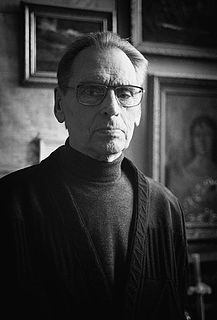
Lev Konstantinovich Bogomolets was a Soviet Russian painter, a member of the Saint Petersburg Union of Artists, who lived and worked in Saint Petersburg, regarded as one of representatives of the Leningrad school of painting, most famous for his landscape paintings.
Ivan Ivanovich Godlevsky was a Soviet Russian painter, a member of the Saint Petersburg Union of Artists, who lived and worked in Leningrad, regarded as a representative of the Leningrad school of painting, most famous for his landscapes painted in decorative style.
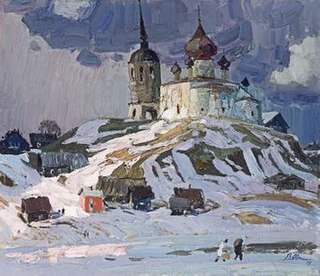
Spring is on the way is a painting by the Russian painter Vladimir Ivanovich Ovchinnikov, who lived and worked in Leningrad. A member of the Leningrad branch of Union of Artists of Russian Federation, he is regarded as one of the leading representatives of the Leningrad School of Painting, and is known especially for his landscape paintings.
Yuri Mikhailovich Pavlov was a Soviet Russian painter, a member of the Saint Petersburg Union of Artists, who live and work in Leningrad - Petersburg, regarded as one of representatives of the Leningrad school of painting.

Retrospective Exhibition Lyrical motifs in postwar Leningrad painting became one of the most notable event in the Saint Petersburg exhibition live of 1995. The Exhibition took place in Nikolai Nekrasov Memorial Museum and was dedicated to 50th Anniversary of the Victory in Great Patriotic war of 1941–1945. There were exhibited 146 art works from private collections of more than 50 importrant masters of the Leningrad School of Painting.

Retrospective Exhibition "In memory of Teacher. Exhibition of Saint Petersburg artists - students workshop of Alexander Osmerkin" became one of the notable event in the Saint Petersburg exhibition live of 1997 year. The Exhibition took place in Saint Petersburg in the Memorial Museum of Nikolai A. Nekrasov. There were exhibited 44 art works from private collections created by 12 pupils of Alexander Osmerkin. All them graduated Repin Institute of Arts in 1930-1950s.
The House of Creativity "Staraya Ladoga" was an all-Russian centre for artistic creativity, which existed in the Volkhovsky District of Leningrad Oblast from the mid-20th century up to the 1990s. It was located opposite the ancient village of Staraya Ladoga on the right bank of the Volkhov River.














